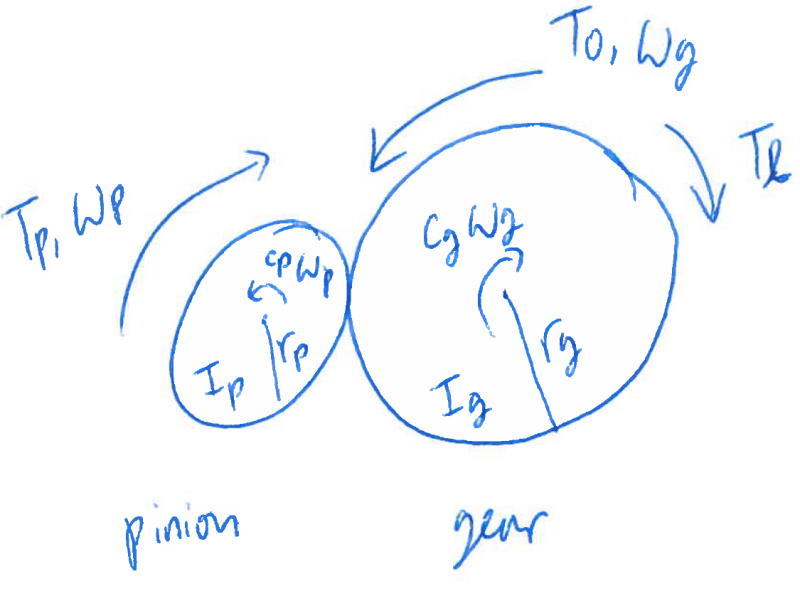
Hi. I have a question about output torque and efficiency of a simple gear pair as shown on the picture. So, I have a pinion and a gear. I give an input torque Tp in the clockwise direction. Therefore, the pinion will rotate with ωp angular velocity in clockwise and the gear ωg in counter-clockwise. Then, I apply a load Tl in the opposite direction of the gear motion (clockwise direction). The gear is still rotating in the counter-clockwise. I neglect the friction between the gear mesh, but I consider the bearing friction both in pinion cp*ωp and gear cg*ωg. The moments of inertia of the pinion and the gear are Ip and Ig, respectively. My question is what the output torque To is because I want to find the efficiency of this gear pair. Thank you very much.
